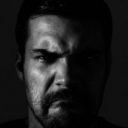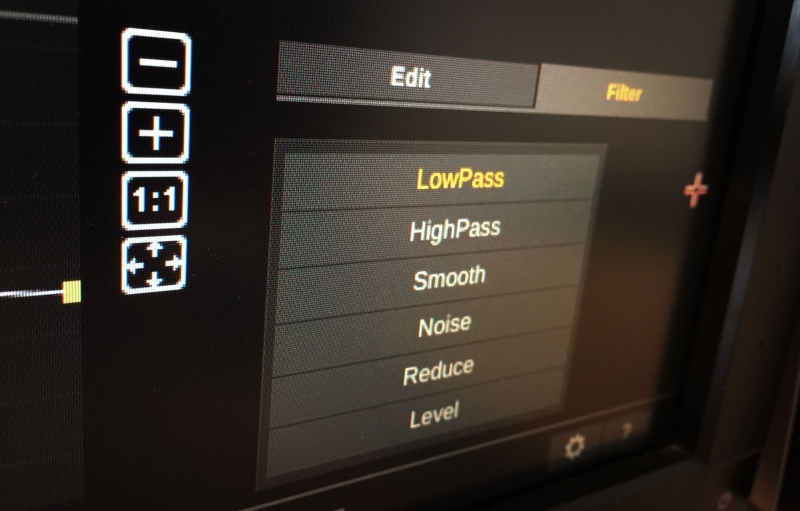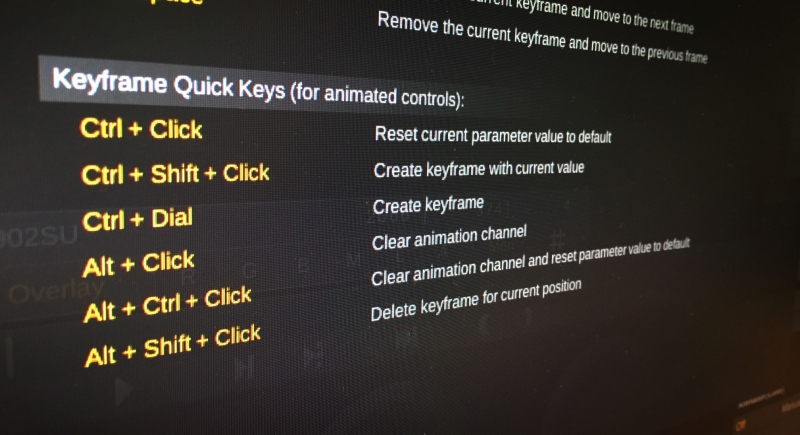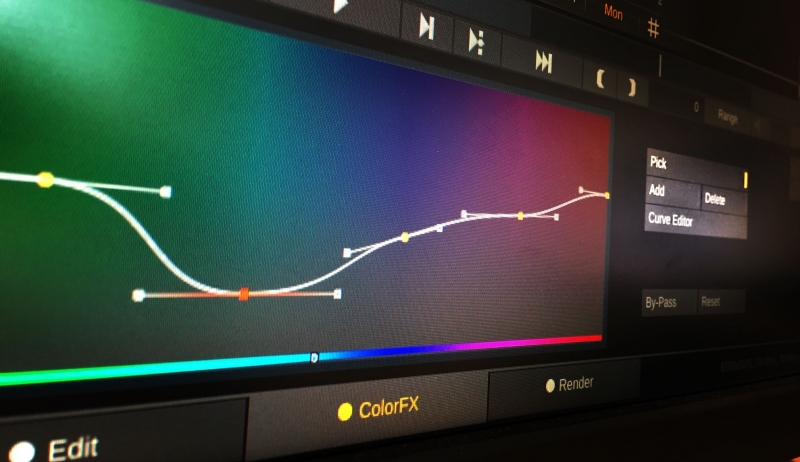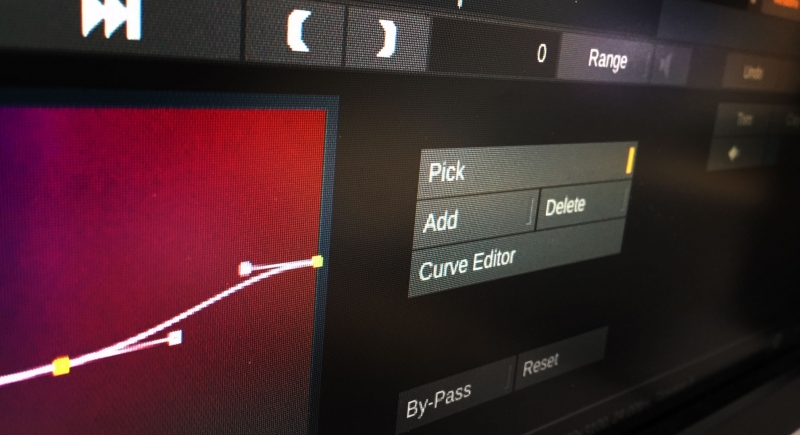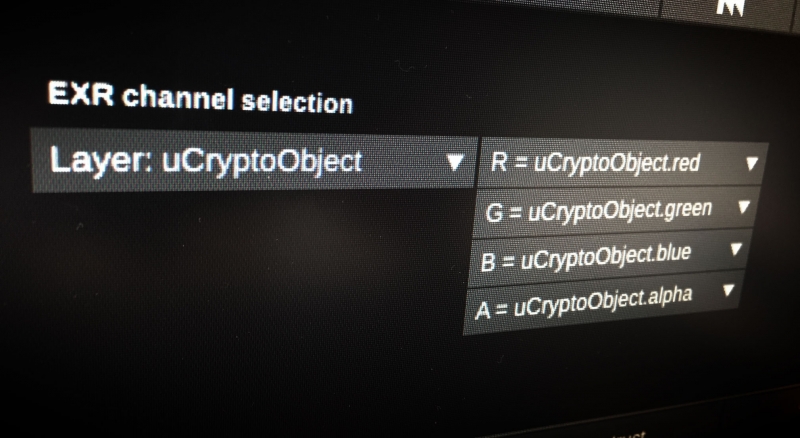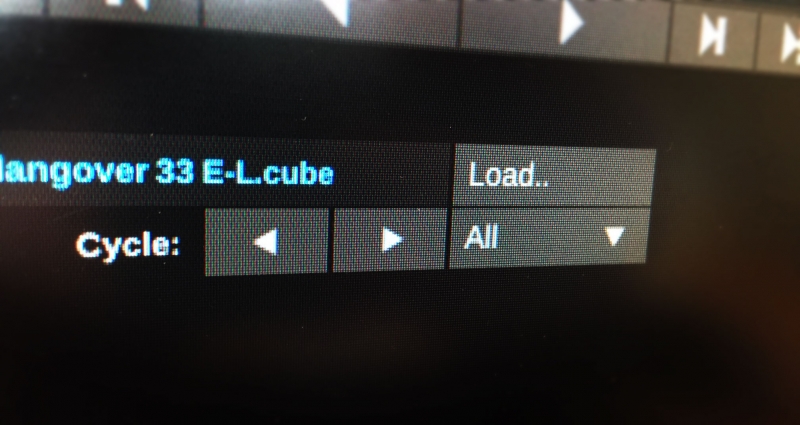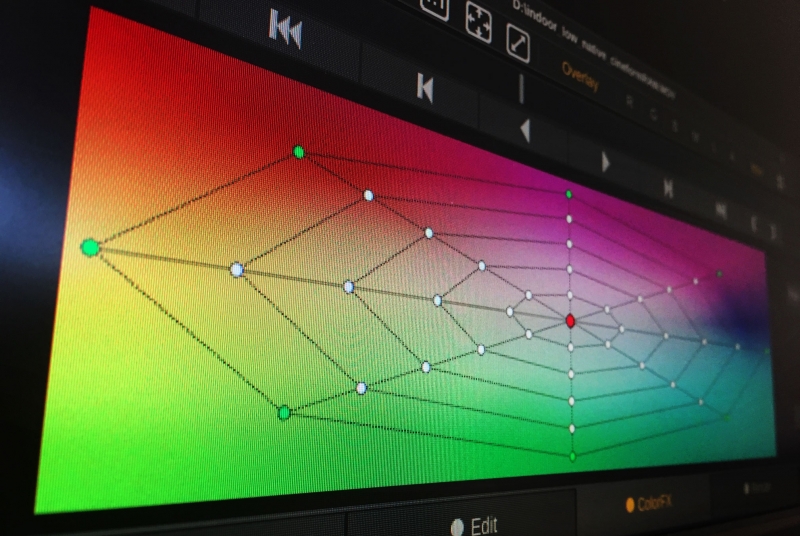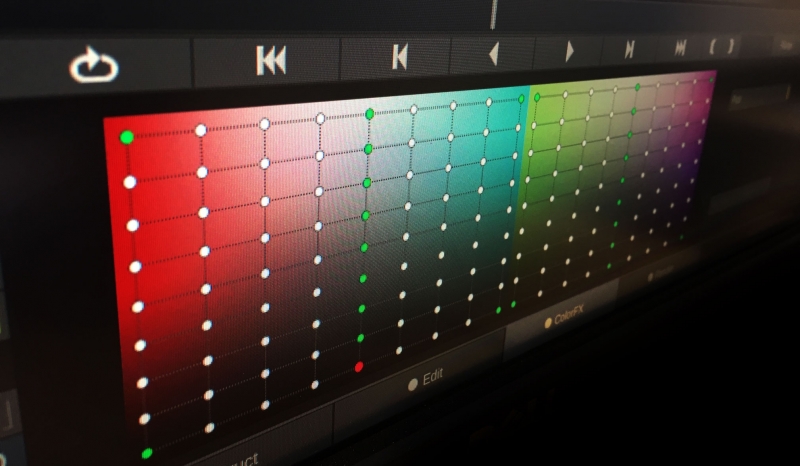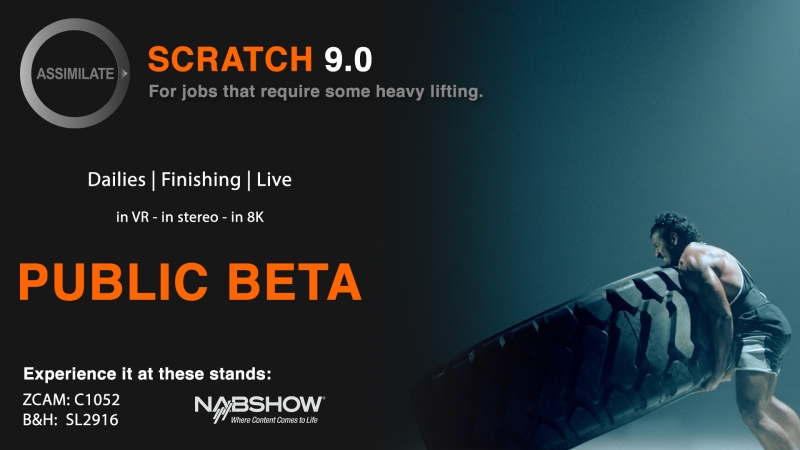Search the Community
Showing results for tags 'beta'.
-
Hey everyone, we just put the beta of SCRATCH 9.1 live. It has a lot of great new features and significant performance improvements. Amongst them are a new color tool (which will be very familiar to many here), support for frame based metadata, support for EXR layers and channels, support for OCIO, same-as-source render option and a whole lot more 🙂 . Full release notes as follows and some screenshots below! RELEASE NOTES Media Formats Increased render speeds through more efficient readback of the image from the GPU. The performance-gains depend on the specific setup / current bottleneck. RGB to YUV conversion is now done on the GPU to further improve performance for output to e.g. ProRes, DNx and H264/5. Support for multi-channel EXR where you can create a custom mapping to the RGBA channels in SCRATCH. Added an extended control-set for ProRes RAW where you are able to select any of the available color spaces and transfer functions in SCRATCH with the debayer. Added support for dynamic (per-frame) metadata. Currently only for ARRI Raw (e.g. camera roll and tilt, lens focus distance metadata items and more). As it is not fully clear yet what the impact on performance is, this feature needs to be enabled explicitly through the Advanced System Settings. Dynamic metadata shows up in the metadata stack and is included in EXR render. Note that in previous versions you needed to explicitly enable the option to write extended metadata in EXR. In this version it is enabled by default, but can be switched off using the relevant Advanced System Setting. Support for writing Cineform movie and dpx-c formats. Support for reading Uncompressed 4:2:2 media with the regular QuickTime reader. Workflows We added a "New Timeline" option in the File Browser when loading media. After selecting the folder to load, this option opens a dialog where the user can set how to load the media (new timeline, timeline per subfolder, etc), apply specific framing and LUTs and do an automatic audio sync with any audio anywhere in the selected folder. This will speed up the loading and managing of media substantially. We added a Same-as-Source render option in the Render tab. There you can select any node from the output tree and select it to render each source clip with its original resolution, frame rate and aspect. This works for almost any output format except for e.g. DNxHD, which in itself has a resolution restriction. SCRATCH has a new / enhanced color-space management where the gamut and transfer function are separate entries. SCRATCH now includes a series of camera specific gamuts and gamma spaces like Log-C, V-Log, Alexa Wide Gamut, etc. as native. Besides letting SCRATCH handle all the necessary color-space conversions automatically, you can also use the new Color space plug-in that you can apply on any level in your composite or output tree to do the necessary transforms. On top of this there is also a new OpenColorIO plug-in to do any needed transform. This plug-in automatically hooks into your OCIO settings from other applications you might have or you can set it to a specific configuration file from the Advanced System settings. Using this plug-in ensured that certain conversions are exactly the same as done in other software that uses OCIO (note though that most to all of the transforms in SCRATCH color management are based on standard transfer-curves and gamut-chromatices). MXF DNx output now includes the audio timecode (slip) in the metadata, which is properly interpreted by Avid Media Composer. The DNx writer now also adds a TapeID column with the audio file name if the source clip has audio synced/linked to it. This way you do no longer need to supply separate ALE files with your output to editorial to transfer this information. SCRATCH now supports AVID Locators: either load them from an EDL or as a separate file (through the Import Conform in the Construct tab). To preserve any Locators when using a Placeholder conform, all notes / locators are preserved in the locator nodes. Various metadata updates. Audio timecode was added as standard element in the Metadata stack in the Construct, Edit and ColorFX tabs. We also added a standard Circle Take item which can also be set in the Scene/Take updater panel and is available as #circled hash code for file-masks and burn-in. Circle-take info is also read from audio metadata that is used in a sync as well as any comments from the audio file. The Scene/Take updater dialog has two new buttons: Circle take and increment scene number or letter. A new Advanced System setting automatically sets a clip’s reel-id to the clip-name when loading media. This speeds up your dailies Avid workflow. Conforming updates. An AAF/XML conform can now also use the direct file-reference in the AAF or XML file (rather than matching from an existing timeline or external folder). The EDL conform now auto detects and creates video tracks from multi-track EDLs. For the EDL export we fixed an issue were dissolves that started in the A-shot were not properly written to an exported EDL. We added an '[Original]' entry with the timeline sort options to easily revert to the original order after sorting on e.g. name or scene/take. The original sort order is maintained over sessions and is in fact the order of the slots – including slot length and transitions. We extended the quick keys for slipping video in the Editor and also apply them to audio slipping when in the Audio section of the Editor. The '<' and '>' keys slip the video/audio 5 and 1 frame respectively. The ',' and '.' keys slip the audio/video with 1 and 0.2 frames respectively. This update contains new version of the SCRATCH-to-Nuke and SCRATCH-to-AfterEffects bridges, which allow for a smoother roundtrip to and back from that software.Support for multi-clip selections, include clips from SCRATCH staging, option to either load back into the SCRATCH Tray or as version in the timeline, SCRATCH remembers opening a shot in Nuke/AE and will open the same project again when selecting the same shot again. Creative Tools A new Hue-Saturation and Hue-Luminance Grid tool replaces the more traditional 6-Vectors in the ColorFX grading toolset. The Hue-Sat grid can be operated in different modes: Linear vs Log/Log2 and displayed as a (color) circle or rectangular grid. Note that the 6-Vectors are still applied if you come from an existing project. You can also still display the 6-Vectors controls rather than the new Grid control if you prefer, by adjusting the relevant setting in the User Preference panel in ColorFX. An update on the Curves: you can now directly add and remove curve handles from the Curves menu and have an indicator to see what section of the curve is represented by the image that you are hovering over with the cursor. In the LUT menu in the ColorFX tab, we added a LUT Cycler option to easily cycle/browse through other LUTs in the same folder as the selected (grading) LUT. The motion estimation mode in the Re-timer was updated to increase both the speed and quality. Animation Editor updates. The Editor now supports a series of filters to tweak your animation: LowPass, HighPass, Smooth, Reduce (the number of keyframes) and Noise (to generate random values). To manage all animation channels more easily, the editor now has filter options only show active channels or only the channels of the selected layer. Furthermore, you can now directly enter values in the editor by shift-clicking a keyframe. When selecting layer-vertices in the View Port, SCRATCH will now automatically select the corresponding channel in the editor and vice-verse. Note that SCRATCH will now by default only show the x and y of any vertex in the Editor. If you want to see also the in/out handle of each vertex then you need to enable to relevant Advanced System setting. We added various keyboard shortcuts for managing animation keyframes while in the ColorFX or Edit tabs: Ctrl + click parameter. If Animation Off: reset value to default. If Animation Manual/Auto: create keyframe with default value or if parked on existing keyframe, change to default. Ctrl + Shift + click parameter. Create keyframe with current value Holding Ctrl + changing parameter also creates a keyframe directly. If Animation Off: Set Animation to "Manual" and create keyframe. If Animation set to Manual/Auto: Keep it Manual/Auto and create keyframe. Alt + click parameter = delete animation (all keyframes), but keep current value Alt + Ctrl + click parameter = delete all animation keyframes and reset to default value Shift + Alt + click parameter = delete keyframe under the cursor for this parameter We added new effects plug-ins with the standard installation of SCRATCH: Denoizer, Grain and HighlightBloom. All of these effects are aimed to be simple and fast and usable in an environment where you need a quick grade. They are not aimed to replace more advanced third party tools you might use in a finishing context. We added the *.vlt extension for loading (Panasonic) 3D LUTs. Misc The Flip/Flop Orientation controls have been moved to the Media menu. The Flip/Flop controls in the Editor are now applied to the Source-orientation and no longer update the framing to make things more consistent. Also, any flip/flops in a conform are now also applied to the Source Orientation instead of the framing. Relabeling of the "Setup" menu to (more explicit) "Framing" in both the ColorFX and Edit tabs. The shot pipeline settings have been moved to the Config-menu in the ColorFX tab. File-size is now interpreted and displayed in the correct units (Mb/Gb) in both the metadata stack and in the various reports that you can generate (which also include the total size of all selected clips). Updated AJA SDK to version 15.1.0.2. incl. support for io 4K Plus, Kona 5 and support for 4K-2SI (2 Sample Interleave) for AJA SDI output. Updated BMD DeckLink SDK to version 11.1. which adds more frame rates and 8K display modes. Allow to start dragging clips directly from the search dialog. Added #sfolder hash code to get specific sub-folder of a source clip. Updated the #spath hash code; without parameters it displays the full path, #spath[0] returns the relative path from the project media folder and #spath[1…n] returns the n subfolders of the source clip. Allow adding custom data to the sync-player broadcast message. Set #code template in the 'Sync Player extended data' sconfig. Quick keys updates and tweaks: the J,K,L keys did not work correctly when in the Canvas menu. Also the 'i' quick key is no longer used for the Canvas and now always sets the in-point for a range. We added an option to directly install the Matchbox (shader) plug-ins collection from the System Settings menu. Added function in the Media Browser - Grade tab to remove all empty layers from the selected shots to easily cleanup your grades. An empty layer is defines as only having a canvas - no grading or fill/matte definition. Play Pro Specific The render-dialog in Play Pro now also has an explicit same-as-source option to render all selected clips to their native resolution, framerate and aspect. The Render can also include a standard burn-in overlay with source shot metadata. You can now link and slip external audio to a clip in the Player tab. If anyone wants to put it through its paces, just register for a normal trial and get the beta installer from here: http://www.assimilatesupport.com/akb/Download51022.aspx Cheers, Mazze
-
Hey folks, we've started the public beta of SCRATCH 9.0 and I'm pretty excited about it :-) . In a nutshell, we have focussed on 3 key things for this release: - 180° stereo VR support (incl. mesh-based geometry conversion, also for Live) - UI update (mainly introducing tab navigation, moving away for the Construct vs. Player methodology) - Dailies toolset (faster file-io, updates on DIT-tools) You can find release notes and the latest build here (download at bottom of page): http://www.assimilatesupport.com/akb/Download50814.aspx And to get started with a 30-day license for v9, go here: http://register.assimilateinc.com/registration.aspx?p=3 We'd love to get feedback from you guys :-) . If you happen to be at NAB, feel free to pop by one of the above stands. Best, Mazze
-
- vr180
- assimilate
-
(and 6 more)
Tagged with:
